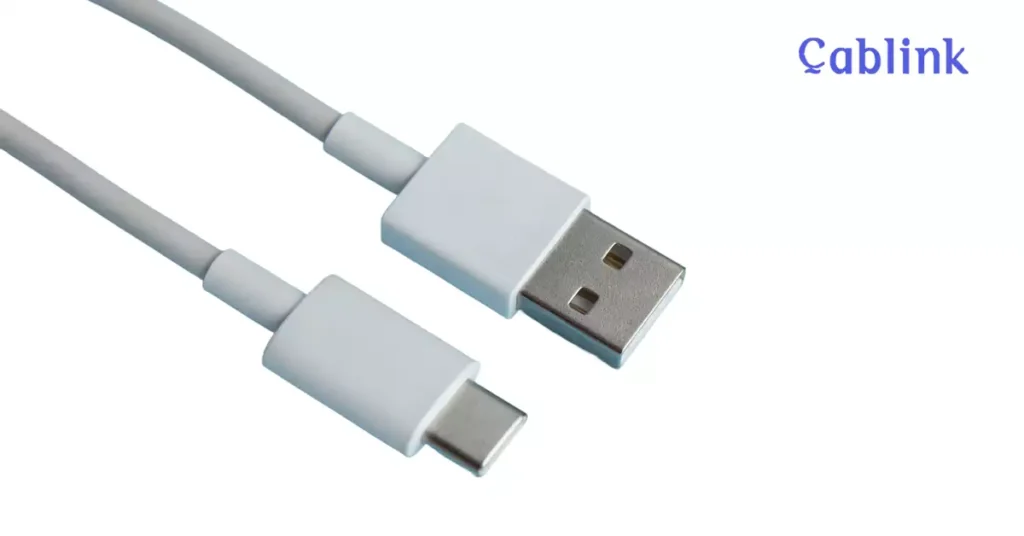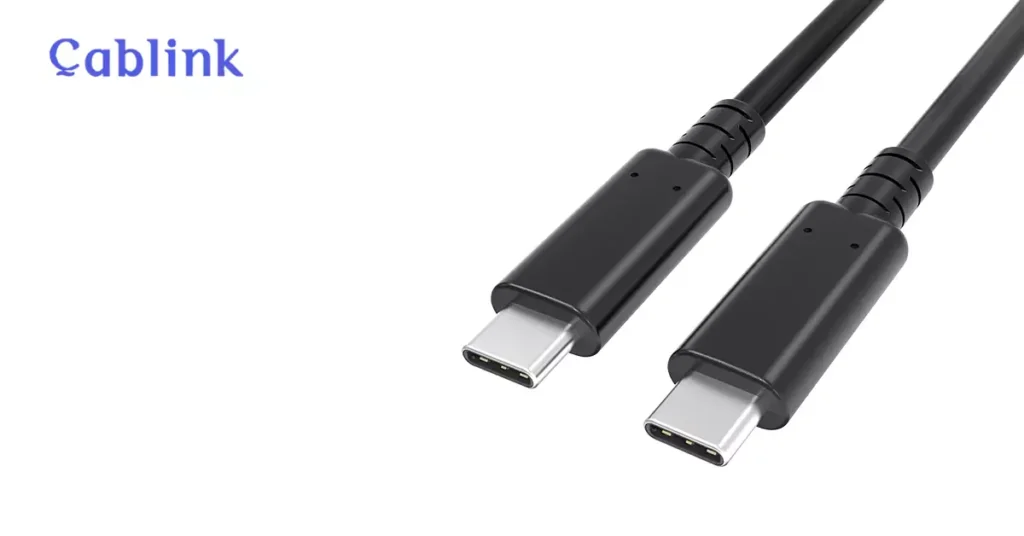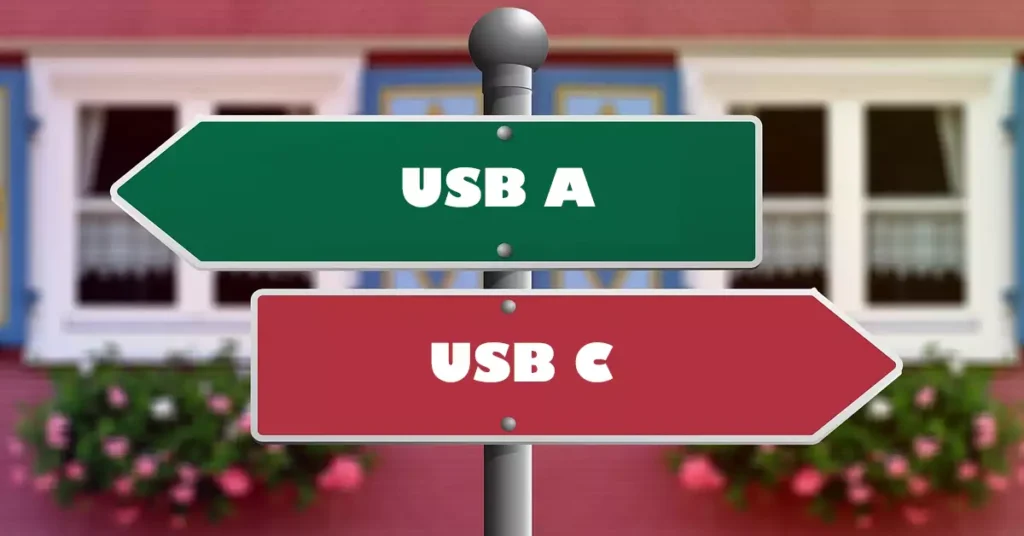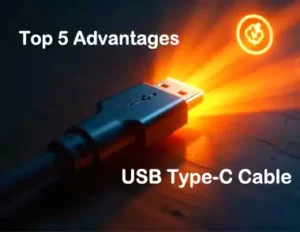
Table of Contents
In the ever-evolving world of technology, connectors are constantly being updated and refined to offer faster speeds, greater compatibility, and improved performance. Two titans stand at the forefront of this evolution: USB-A and USB- C cables. While both serve the purpose of connecting devices and transferring data, they offer distinct advantages and cater to different needs.
This comprehensive guide will delve into the world of USB-C vs. USB-A cables, exploring their differences, advantages, disadvantages, and ultimately helping you determine which connector is right for your specific needs.
The Basics of USB Cable Technology:
Before diving into the specifics of USB-A and USB-C cables, it’s essential to understand the fundamentals of USB technology.
USB, short for Universal Serial Bus, is a widely adopted industry standard that allows various devices like computers, smartphones, cameras, printers, and more to connect and communicate with each other. It provides a plug-and-play interface, meaning you can effortlessly connect and disconnect devices without restarting your computer. USB also handles both power delivery and data transfer, enabling seamless information exchange between devices.
USB-A Cable: The Veteran Connector:

USB-A cable is the classic, rectangular-shaped USB connector commonly found on computers, laptops, and older devices. It’s unidirectional (must be plugged in a specific way).
USB-A, or Universal Serial Bus Type-A, has been the dominant connector for decades. It’s characterized by its rectangular shape and is widely used on desktops, laptops, gaming consoles, and power outlets.
Advantages of USB-A:
There are 3 benefits of Type USB-A,
Widespread Compatibility: Due to its long history, USB-A cable enjoys widespread compatibility with a vast array of devices.
Accessibility & Affordability: USB-A cables and peripherals are readily available and often more affordable than their USB-C counterparts.
Extensive Device Support: USB-A cable is still the standard for many older devices and peripherals.
Disadvantages of USB-A:
USB-A also have 3 dsadvantages,
Slower Data Transfer Speeds: Compared to USB-C, USB-A offers slower data transfer speeds, particularly with older versions (e.g., USB 2.0).
Directional Connection: USB-A connectors are directional, meaning they need to be inserted in a specific orientation. This can sometimes lead to fumbling and frustration.
Limited Power Delivery: While capable of delivering power, USB-A generally offers lower power delivery compared to USB-C.
USB-C Cable: The Rising Star:

USB-C cable is a smaller, oval-shaped connector that is reversible (can be plugged in either way). Offers faster data transfer speeds, higher power delivery, and supports additional functions like HDMI output through “alternate modes.
USB-C, or Universal Serial Bus Type-C, is a newer connector designed to address the limitations of USB-A. It boasts a smaller, reversible design and offers significantly faster data transfer speeds and higher power delivery capabilities.
Advantages of USB-C:
As to newest USB connection type, USB-C have 3 benefits,
Lightning-Fast Data Transfer: USB-C supports incredibly fast data transfer speeds, particularly with the latest USB 4 Gen 2 standard, which can reach up to 80 Gbps.
Reversible Design: The symmetrical design of USB-C eliminates the need for orientation when connecting devices.
Powerful Charging & Data Transfer: USB-C offers higher power delivery capabilities, allowing it to charge devices quickly and even power external displays.
Disadvantages of USB-C:
USB-C still have some cons here,
Compatibility Concerns: While adoption is growing rapidly, not all devices yet support USB-C. Older devices may require adapters for compatibility.
Higher Cost: USB-C cables and peripherals can be more expensive than their USB-A counterparts due to the newer technology.
What’s the Different Between USB-A and USB-C Cable?

Here are the 5 key differences between USB-A and USB-C cable:
1. Physical Design:
USB-A Cable: Rectangular shape with a distinct top and bottom. Requires directional insertion (must be plugged in correctly).
USB-C Cable: Oval shape, reversible design (plugs in either way).
2. Data Transfer Speeds:
USB-A Cable: Fastest standard is USB 3.2 Gen 1 at up to 5 Gbps. Older versions like USB 2.0 are much slower at 480 Mbps.
USB-C Cable: Up to 80 Gbps with the latest USB 4 V2.0 standard. Offers significantly higher bandwidth for faster data transfers, especially for large files and high-resolution media.
3. Power Delivery:
USB-A Cable: Can deliver power, but typically less than USB-C. Some older versions have limited power output capabilities.
USB-C Cable: Can deliver significantly higher power (up to 100W or more) for faster charging of laptops and other demanding devices.
4. Alternate Modes:
USB-A Cable: Primarily limited to data transfer and power delivery.
USB-C Cable: Supports “alternate modes” that allow it to carry video signals (HDMI, DisplayPort), audio output, and even Ethernet connectivity through adapters. This makes USB-C a more versatile connector for connecting to multiple peripherals.
5. Compatibility & Availability:
USB-A Cable: Extremely widespread compatibility with older devices and accessories. Abundant and inexpensive options available.
USB-C Cable: Becoming increasingly common on new devices, but still not universal. May require adapters for older devices.
Which USB Cable Is Right For You?
Ultimately, the best choice between USB-A and USB-C cables depends on your specific needs and priorities:
Everyday Use & Compatibility: If you prioritize widespread compatibility with a variety of devices, USB-A cable remains a solid choice, especially for older peripherals.
Performance & Future-Proofing: For those seeking the fastest data transfer speeds, powerful charging capabilities, and a reversible design, USB-C cable is the clear winner. It’s also a future-proof investment as more devices adopt this standard.
Budget Considerations: If cost is a primary concern, USB-A cable offers greater affordability. However, considering the long-term benefits of USB-C cable, the investment may be worthwhile in the long run.
Why We Need USB Cables?
While often overlooked, USB cables are the unsung champions of connectivity, silently facilitating countless interactions between our devices and the digital world. But why are they so essential? Let’s delve into the reasons why we need these ubiquitous cords:
1. The Universal Language of Devices:
The beauty of USB lies in its universality. USB stands for “Universal Serial Bus,” a name that perfectly encapsulates its purpose – to create a common language for devices to communicate with each other. Whether it’s a phone charging from a laptop, a mouse controlling your computer, or an external hard drive storing precious data, USB provides a standardized interface, eliminating the need for proprietary connectors and fostering seamless compatibility.
2. Powering Supply
Beyond data transfer, USB cables play a crucial role in powering our devices. From smartphones and tablets to cameras and gaming consoles, many electronic gadgets rely on USB for charging. The ability to conveniently connect these devices to power sources makes USB an indispensable component of our everyday lives.
3. Data Transfer
USB cables are the essential conduit for transferring data between devices. Whether you’re backing up important files, sharing photos with friends, or syncing your music library, USB offers a reliable and efficient way to move information across devices. The faster data transfer speeds offered by newer USB standards (like USB 3.2 Gen 2×2) further enhance the user experience, allowing for quick and effortless data exchange.
4. Adaptability and Evolution:
USB technology has evolved significantly since its inception, constantly pushing the boundaries of speed, power delivery, and functionality. With new generations like USB-C emerging, offering even faster speeds and reversible connectors, USB remains a dynamic standard that adapts to the ever-changing needs of users.
5. Accessibility and Affordability:
One of the most significant strengths of USB is its widespread availability and affordability. USB cables are produced in vast quantities, making them readily accessible and relatively inexpensive compared to other connection technologies. This accessibility ensures that everyone can benefit from the advantages of USB connectivity, regardless of their budget or technical expertise.
From powering our devices to facilitating seamless data transfer, USB cables are an integral part of our digital lives. Their universality, reliability, affordability, and constant evolution make them essential tools for connecting with the world around us. So next time you reach for that familiar cable, remember the unsung hero that makes our connected world possible.
Beyond USB-A and USB-C: The Future of Connectivity
While USB-A and USB-C dominate the current landscape, the future of connectivity is constantly evolving.
Thunderbolt and other emerging technologies promise even faster speeds and greater capabilities. As technology advances, it’s essential to stay informed about the latest developments in connectors and choose the best solution for your evolving needs.
That’s all of the post, contact our expert today if you still have any questions about USB A and USB C cable!
FAQs:

Is USB-A still relevant?
Yes! While USB-C is gaining popularity, USB-A is still widely used and supported by many devices. It’s especially common on older electronics, peripherals, and power adapters.
What is the maximum data transfer speed of a USB-A cable?
The fastest standard for USB-A is USB 3.2 Gen 1, offering speeds up to 5 Gbps. Older versions (USB 2.0) are slower at 480 Mbps.
Can I charge my smartphone with a USB-A cable?
Yes, but it depends on your phone and the adapter you use. Many smartphones have switched to USB-C charging, so you may need an adapter or a phone that supports USB-A charging.
Why does USB-A require directional insertion?
USB-A connectors are designed with a specific “up” side to ensure proper connection.
Can I connect a USB A cable into a USB 3.0 port?
Yes, absolutely! USB standards are backward compatible. You can always connect a USB-A cable (any generation) into a USB 3.0 port. However, the data transfer speed will be limited to the capability of the older USB standard. For example, plugging a USB 2.0 device into a USB 3.0 port will only achieve USB 2.0 speeds.
What is better, USB 2.0 or USB 3.0?
USB 3.0 is definitely superior to USB 2.0. It offers significantly faster data transfer speeds, reaching up to 5 Gbps compared to USB 2.0’s 480 Mbps. This means quicker file transfers and smoother operation for demanding applications.
However, USB 2.0 still has its place. It’s more widely available and often cheaper. If you don’t need the blazing speeds of USB 3.0, then a USB 2.0 cable will suffice for many tasks.
What's the difference between a USB 3.0 and USB-A?
USB 3.0 is a data transfer standard, while USB-A is a physical connector type. You can have a USB 3.0 cable with a USB-A connector, or a USB 2.0 cable with a USB-A connector.
Think of it this way: the standard defines the speed and capabilities, while the connector is just how you physically connect it to a device.
How to repair a loose micro-USB cable?
Unfortunately, repairing a loose micro-USB cable can be tricky. The connectors are delicate and often soldered internally.
If you’re comfortable with electronics, you might try resoldering the connector. However, this requires specialized tools and expertise.
A simpler solution is to replace the cable entirely. It’s usually more cost-effective and less hassle than attempting a repair.
How does a USB cable affect data transfer speed?
The USB cable plays a crucial role in data transfer speed.
Standard: The cable needs to support the required standard (USB 2.0 or USB 3.0, etc.).
Quality: A high-quality cable with thick wires and proper shielding minimizes signal loss, leading to faster transfers.
Length: Longer cables can introduce more resistance, potentially slowing down data transfer speeds.
How does USB 4.0 differ from 3.0?
USB 4.0 is a significant upgrade over USB 3.0. Here are some key differences:
Speed: USB 4.0 boasts incredible speeds of up to 40 Gbps, nearly 8 times faster than USB 3.2 Gen 2×2 (the fastest USB 3.0 version).
Protocol: It supports Thunderbolt 3 and DisplayPort Alternate Mode, allowing for video transmission and power delivery over a single cable.
Backward Compatibility: USB 4.0 is backward compatible with older USB standards.
How can I use a USB-C to C cable?
A USB-C to C cable connects two devices that have USB-C ports. These cables are used for charging, data transfer, and video output depending on the device capabilities. Simply plug one end into each device. Many laptops, smartphones, tablets, and other modern electronics now use USB-C.
Can you extend USB cables?
Yes, you can extend USB cables using USB cable extenders or adapters. These devices essentially add length to your existing cable, allowing you to connect devices that are further apart.
However, be sure to choose an extender designed for the specific USB standard (2.0, 3.0, etc.) and data transfer needs. Using an inappropriate extender can result in signal loss and slower speeds.
Why are USB-C cables so expensive?
There are a few reasons why USB-C cables can be pricier than older USB types:
Manufacturing Costs: USB-C connectors are more complex to manufacture, requiring precise engineering and assembly.
Materials: High-quality USB-C cables often use thicker wires and better shielding to ensure reliable and fast data transfer.
Demand: The increasing popularity of USB-C devices has driven up demand, leading to potentially higher prices.
Remember, investing in a high-quality cable can make a big difference in performance and longevity!
What other functions can USB-C cables support besides data transfer and charging?
Through “alternate modes,” USB-C can carry video signals (HDMI, DisplayPort), audio output, and even Ethernet connectivity.
Will USB-C eventually replace all other connectors?
While USB-C is rapidly becoming the standard for many devices, it’s unlikely to completely replace all connector types (like HDMI or ethernet) due to their specialized functions.



